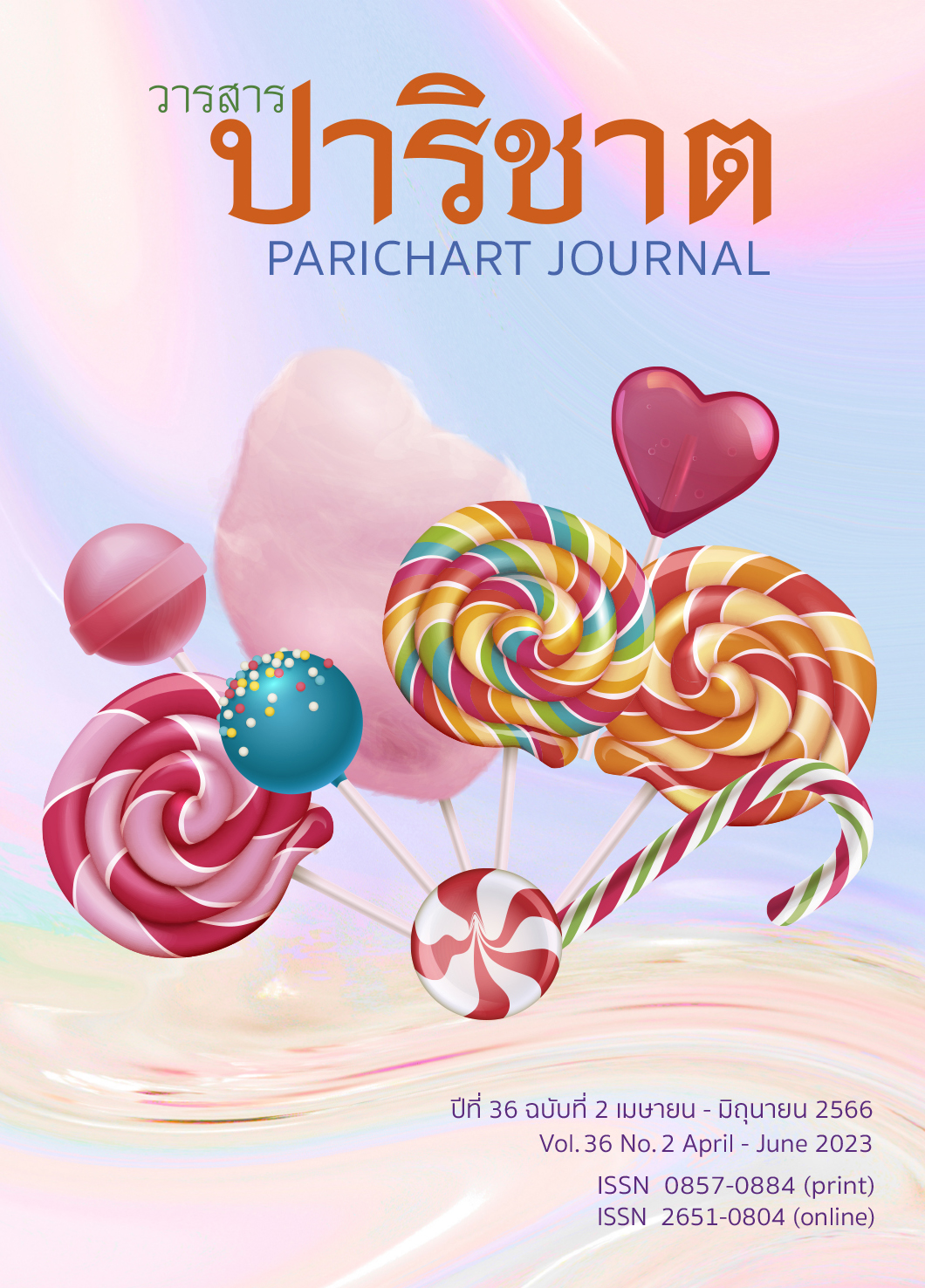Niche Tourism Marketing Strategies: Recreational Activities Tourism According to The Youth's Special Interests
Main Article Content
Abstract
This research is the study of recreational activities according to the preferences and special interests of youth. It aims to formulate guidelines for developing niche tourism marketing strategies for youth target groups. It is quantitative research. The data was collected by using questionnaires. The research population consisted of Thai youth with the age range from 15 to 24. The respondents were female students and male students. Most of them were with the age range from 19 to 20, with their income ranging from less than 5,000 to 10,000 baht. The top five recreational activities they enjoyed were food tasting, walking, photography, nature and environmental activities. and earning. The researcher has proposed a guideline for developing niche tourism marketing strategies for the youth target group. The unique features of the tour program for young tourists included 3 different styles: the nature touch tour program, an intimate tour program with local people, and bike tour program. The research results can be applied to concepts of niche tourism products and niche tourist markets. Niche tourism is a form of travel and tourism products that are tailored to meet the needs of a niche market or individual tourists with specific needs based on their interests. It is useful to clarify the demographic characteristics and choice of travel destinations for these tourists differently. This clearly affects the classification of tourists' behavior in niche tourism marketing.
Article Details

This work is licensed under a Creative Commons Attribution-NonCommercial-NoDerivatives 4.0 International License.
References
TAT Intelligence Center, Tourism Authority of Thailand. (2021, April 20). Survey of Thai Tourist in 2020. https://intelligencecenter.tat.or.th/articles/34101 (in Thai)
Richards, G. (2008). Youth travel matters: understanding the global phenomenon of youth travel. The World Tourism Organization.
Nash, R., Thyne, M., & Davies, S. (2006). An investigation into customer satisfaction levels in the budget accommodation sector in Scotland: A case study of backpacker tourists and the Scottish Youth Hostels Association. Tourism Management, 27(3), 525-532.
Weaver, D. and Opperman, M. (2000). Tourism management. John Wiley & Sons.
Novelli, M. (2005). Niche tourism. Routledge.
McCarthy, E. J. & Perreault, W. D. Jr. (1996). Basic marketing: A global managerial approach. (12thed.). Irwin.
Kotler, P. and Keller, K. (2015). Marketing Management. (15th ed.). Pearson Education Limited.
World Tourism Organization. (2014). Long-term forecast: Tourism towards 2030. The World Tourism Organization (UNWTO). The United Nations.
Ministry of Tourism and Sports. (2014). National Tourism Development Plan 2012-2016. Ministry of Tourism and Sports.
Esichaikul. R. (2014). Niche tourism management. Sukhothai Thammathirat Open University.
Management and Development of Registration Technology, Department of Provincial Administration. (2021, April 20). Demographic information Separated by age (years). https://stat.bora.dopa.go.th/stat/statnew/statMenu/newStat/home.php (in Thai)
Silpcharu, T. (2005). Research and statistical analysis with SPSS. SE-EDUCATION Public Company Limited. (in Thai)
Phattharayuttawat, S. (2002). Psychological measurement guide. Medical Media. (in Thai)
Gotschi, E., Vogel, E., Lindenthal, T., and Larcher, M. (2010). The role of knowledge, social norms, and attitudes toward organic products and shopping behavior: survey results from high school students in Vienna. The Journal of Environmental Education. 41(2), 88-100.
Lerspipatthananon, W. (2018). Thai gen Y people’ travelling behavior and motivation patterns. Dusit Thani College Journal, 2018(12). 135-149. (in Thai)
Jittakwattana.B. (2015). Marketing management for tourism industry. Fernkaluang printing and publishing limited partnership.
Um, S., & Crompton, J. L. (1990). Attitude determinants in tourism destination process. Annals of Tourism Research, 17(3), 432–448.
Hosany, S., Ekinci, Y., & Uysal, M. (2007). Destination image and destination personality. International Journal of Culture, Tourism and Hospitality Research, 1(1), 62–81.
Tasci, A. D. A., Gartner, W. C., & Cavusgil, S. T. (2007). Conceptualization and operationalization of destination image. Journal of Hospitality & Tourism Research, 31(2), 194–223.
Ek-Iem, B. and Senanimitr, T. (2022). Organic farm stay management to accommodate the niche tourist market in Ban Pang Term, Samoeng district, Chiangmai. School of Administrative Studies Academic Journal. 5(1). 44-63. (in Thai)
Ramarn, T., Kubaha, T., Ohsay, K., and Konongbua, P. (2018). Suitable creative tourism activities for upstream community, Pha payom canal, Phattalung province. Parichart Journal Thaksin University, 31(3), 103-111. (in Thai)
Subsing, B. and Komin, W. (2017). Cycling behavior and promoting the use of bicycles on Si-chang island, Chonburi province. Journal of Social Research, 1(40), 177-200. (in Thai)
Hinch, T. and Higham, J. (2011). Sport tourism development. (2nd ed.). Channel View Publication.


